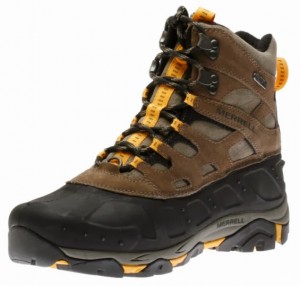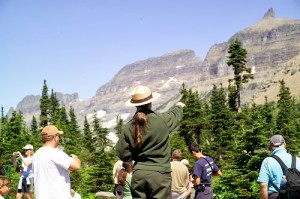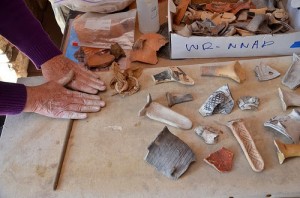For much of history, people gained employment by learning a trade and practicing that trade for the rest of their lives, but with the increased accessibility of higher education and the growth of technology, people moved away from trade jobs to large corporate offices.
For the past few decades, the industries that have seen the greatest decline are in manufacturing with more projected decline to come. The industry with the greatest decline is apparel manufacturing, which is projected to see a 58 percent reduction in employment from 2012 to 2022. Jewelry and silverware manufacturing is a close second with a 42 percent decline. Much of that comes from a trend toward outsourcing and globalization.
While there’s nothing wrong with corporate jobs or the economic success they can bring, working in an office isn’t for everyone. Some people just enjoy making things and working with their hands. Fortunately, you have plenty of options for careers not set in the office. Let’s take a look at some exciting, hands-on jobs for people who don’t want to work in an office.
1. Construction
In the modern world of common infrastructure, it’s easy to forget that everything—the houses, apartments, vast skyscrapers—around us was built by someone, and that’s where construction workers come in. They are responsible for essentially all the basic physic al labor tasks at a construction site. This includes cleaning and preparing construction sites, digging trenches, operating construction equipment, and following construction plans.
al labor tasks at a construction site. This includes cleaning and preparing construction sites, digging trenches, operating construction equipment, and following construction plans.
Based on their specific duties, construction workers can be divided into laborers and helpers. Laborers primarily prepare and clean construction sites and perform general duties, though some specialize in specific areas. Helpers assist craftspeople. For instance, they can put together or take apart equipment for electricians or help cement masons move and set molds.
Construction is a physically demanding field and tends to have one of the highest rates of injury and illness among all other occupations. They can suffer cuts and bruises from materials and burns from chemicals. The right equipment can minimize injuries. Hard hats and pads can prevent impact injuries, while a sturdy pair of Merrell work boots can protect your feet and provide plenty of traction so that you don’t slip and fall. Construction doesn’t require any specific education, though some laborers who specialize may attend a trade school or apprenticeship. Training is short-term and learned on the job. You may require certifications or licenses for certain tasks, particularly removing hazardous materials.
- Median annual pay: $29,160
- Number of jobs: 1,284,600
- Job growth (2012-2022): 25%
2. Zoologist/Wildlife Biologist
Despite our relative dominance on the food chain, humans make up such a tiny portion of the world. It’s estimated that there are about 8.7 million different species of animals in the world, compared to just one human species.
Zoologists and wildlife biologists make it their duty to study animals, including behaviors, physical characteristics, and their interactions with individual ecosystems and the world at large. Through their studies, wildlife biologists can figure out how humans are impacting natural habitats and develop conservation plans. This is done through a series of experiments and studies that lead to research papers, scholarly articles, and presentations to the general public.
Some biologists may work in an office, but depending on the position and personal interests, much of their time can be spent in the field, within the animals’ natural habitats. This often means plenty of travel to remote locations, from sea to forest, mountain to desert.
For entry-level positions, you need a bachelor’s degree in zoology, wildlife biology, or a similar field. As you progress, expect to take in as much information as possible. It’s not uncommon for zoologists to also learn botany, physics, chemistry, anatomy, computer programming, and molecular biology, all of which contribute to a better understanding of animals. Learning some basic outdoor survival skills doesn’t hurt either.
3. Geoscientist
The Earth is an expansive, amazing planet that is an estimated 4.54 billion years old. Humans are only about 400,000 years old, so we still have so much to learn about this planet. Geoscientists are responsible for studying various physical aspects of Earth. Most geoscientists today work in the oil and gas industry, but there are several different types of geoscientists.
- Paleontologists study fossils and trace the history of plants, animals, and Earth’s geology.
- Geologists study minerals, rocks, and their formations to better understand Earth’s evolution.
- Oceanographers study everything about the oceans, from motion and circulation to their chemical properties.
- Seismologists research earthquakes, tsunamis, and other related natural phenomena.
Working as a geoscientist requires a great deal of work in the field and in labs. As a geoscientist, you may travel to foreign countries and spend months in remote areas.
Becoming a geoscientist requires at least a bachelor’s degree in geosciences, though you can gain acceptance into entry-level positions with a different degree as long as you have coursework in geology. If you want to advance, you will need to expand your horizons and take courses in math, engineering, and other physical sciences. Many geoscientists must also have experience with computers, specifically data analysis, digital mapping, and computer modeling.
- Median annual pay: $90,890
- Number of jobs: 38,200
- Job growth (2012-2022): 16%
4. Park/Forest Ranger
Our national parks are a highlight of our country, offering a glimpse into the nearly untouched natural world and the land  that predates our existence. Park and forest rangers are responsible for protecting national parks and forests and ensuring the safety of park visitors. They enforce fire and safety codes, conduct rescues, and educate visitors about the history and ecology of the national park.
that predates our existence. Park and forest rangers are responsible for protecting national parks and forests and ensuring the safety of park visitors. They enforce fire and safety codes, conduct rescues, and educate visitors about the history and ecology of the national park.
As you can imagine, most of your time as a park ranger is spent outdoors, patrolling trails and campgrounds and providing guided tours or park presentations. You may also spend time in the visitor center, where you’ll direct guests, provide maps, and inform them of any areas that are closed to the public.
If you want to become a park ranger, you should attend a 4-year college and earn bachelor’s in biology, forestry, or environmental science. However, experience in the field or volunteering at a park can help you become a park ranger if you don’t have a related degree. Potential rangers should also be relatively fit, considering all the activity they’ll be doing, and have good speaking skills to communicate with visitors.
- Median annual pay: $59,060
- Number of jobs: 34,200
- Job growth (2012-2022): 3%
5. Archaeologist
Commonly confused with paleontology, archaeology refers to the specific study of human artifacts, while paleontologists study fossil remains. Through documentation , interviews, research, and occasional digs, archaeologists figure out the languages, behaviors, and characteristics of cultures and people from all over the world.
, interviews, research, and occasional digs, archaeologists figure out the languages, behaviors, and characteristics of cultures and people from all over the world.
Some specialize in the prehistory and evolution of humans, while others try to understand present populations and potential issues that humans may face in the future.
Archaeologists work for a wide range of firms and organizations, including museums, historical sites, colleges, and government agencies, like the National Park Service. Archaeologists spend much of their time in the field—excavating artifacts, exploring indigenous communities—or analyzing samples in a lab.
Although you can work as an assistant or fieldworker with a bachelor’s degree, most archaeologists require a master’s degree in order to advance beyond entry-level positions. For archaeological work outside of the United States, you will require a Ph.D. Working in archaeology also requires work experience via field training or internships with nonprofits, museums, or historical societies.
- Median annual pay: $57,420
- Number of jobs: 7,200
- Job growth (2012-2022): 19%
6. Photographer
As the saying goes, a picture is worth a thousand words. Photographers turn that saying into a reality. They use their creativity, expertise, and composition to shoot photos that capture a moment, tell a story, or advertise a product. Many photographers are self-employed or work on a freelance basis. Some hold workshops or teach photography classes.
Depending on the equipment you have and your interests, you can specialize in a specific form of photography, such as:
- Portrait
- Aerial
- Scientific
- Fine art
- Photojournalism
Photographers can work in varying environments depending on their specialty. Nature photographers would, of course, spend much of their time outdoors. Other photographers may shoot photos in studios. Regardless of type or style, most photographers will have to spend some portion of their time in front of a computer, altering and enhancing their photos.
Photographers can take college classes to gain a better understanding of technique, but many photographers learn on their own and don’t have a related degree. As a burgeoning photographer, you can become an assistant to a professional to gain experience. Training is often long term as photography requires constant adaptation to situations and new equipment.
- Median annual pay: $28,490
- Number of jobs: 136,300
- Job growth: 4%
Concluding Thoughts
The world is filled with possibilities. If you don’t feel comfortable within the structures of a corporate environment, there’s nothing wrong with exploring different opportunities and finding a career that gives you the chance to bloom and grow as a person. Plenty of non-office jobs offer benefits and fair salaries along with the promise of working more with your hands to create something new, navigate new facets of the world we know, or help others learn and reach new horizons. Life is too short to spend doing something you hate or even mildly dislike, so get out there and stretch your wings.
Images:
- Merrell Moab sold at Walking on a Cloud
- “Park Ranger giving a Ranger Talk” by GlacierNPS is licensed under CC BY 2.0
- “Grand Canyon Archaeology Day 2013 Making a Clay Pot 3433” by Grand Canyon NPS is licensed under CC BY 2.0
Resources:
- http://www.bls.gov/ooh/construction-and-extraction/construction-laborers-and-helpers.htm
- http://www.bls.gov/ooh/life-physical-and-social-science/zoologists-and-wildlife-biologists.htm
- http://www.bls.gov/ooh/life-physical-and-social-science/geoscientists.htm
- http://education-portal.com/articles/Park_Ranger_Salary_Duties_and_Requirements.html
- http://www.bls.gov/ooh/life-physical-and-social-science/conservation-scientists.htm
- http://www.bls.gov/ooh/life-physical-and-social-science/anthropologists-and-archeologists.htm
- http://www.bls.gov/ooh/media-and-communication/photographers.htm









